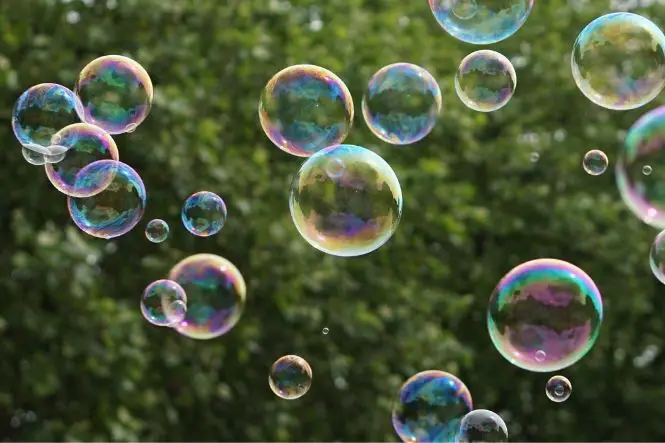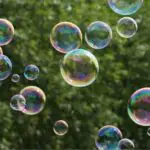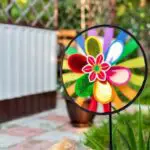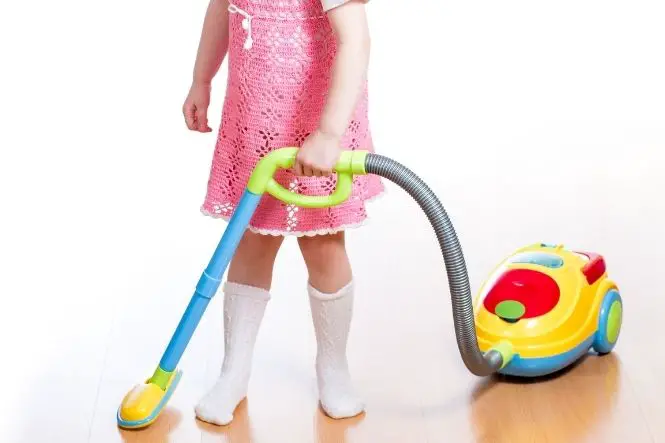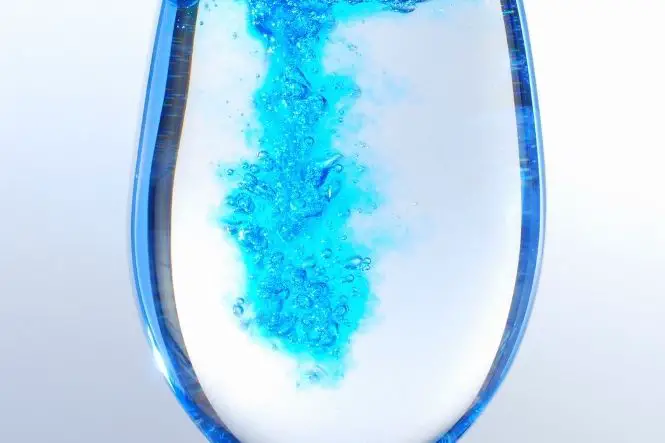Water molecules at the surface of a glass of water are more strongly attracted to each other than to water molecules in the rest of the water. This creates a kind of ‘skin’ at the surface of the water, called surface tension.
Water Droplets and Bubbles
Run a tap slowly and watch the drops of water, or blow some bubbles. The surface tension in the water at the surface of the droplet, or the in the film of water and detergent around the bubble, pulls the drop of water or the bubble into a sphere, the shape with the smallest possible surface area.
Polish a surface with wax-based polish and drop some water onto it. The wax repels the water and the water forms almost spherical drops.
Carefully light a candle. Dip the large end of a funnel in bubble solution or water with washing up liquid in it. Blow a bubble using the small end of the funnel as a mouthpiece, then block the end of the funnel with a finger to stop the bubble deflating. Hold the small end of the funnel next to the flame, and unblock it – the bubble should blow the flame out.
The surface tension keeps the bubble round – when the pressure is released by unblocking the funnel, the surface tension pulls the film of soapy water flat, forcing the air out and blowing out the candle.
Overfilling a Glass
Fill a glass to the brim with water. Carefully add coins, one by one, by putting them in side on in the middle of the glass and letting go. How many can you add before it overflows? Does it work with oil or milk?
The top surface of the water will curve upwards, held together by the surface tension, until the glass fills too much and the water spills over.
Floating on Surface Tension
Put a needle on a small piece of tissue or a square of newspaper. Carefully place the tissue on the surface of a bowl of water – the tissue should sink away, leaving the needle floating. This needs a steady hand, and might take a few goes.
Small insects such as water boatmen and pond skaters use surface tension to move around on the surface of ponds.
Drop a little washing up liquid into the water where the needle is floating – what happens to the needle? Sprinkle some ground pepper on the surface of a glass of water and then drop a little washing up liquid in the water – what happens to the pepper?
Make a small boat from a matchstick folded into a V shape, or a U shape cut off the end of an elastic band, float it in bowl of glass of water and drop a little washing up liquid inside the U or V shape. What happens to the boat?
Soaps and detergents make the needle fall because they reduce the surface tension that allows it to float. Soaps and detergents also make the paper and the boats move, by reducing the surface tension behind the floating objects. The stronger surface tension ahead of the objects then pulls them forward.
Reducing surface tension helps get clothes and dishes clean. This makes water with detergent ‘wetter’ and is more likely to stick to fabric or dirt than to itself, making it better for cleaning. Heating water reduces its surface tension too. See ‘Soap and Detergent Chemistry’ for more on surface tension and surfactants.

